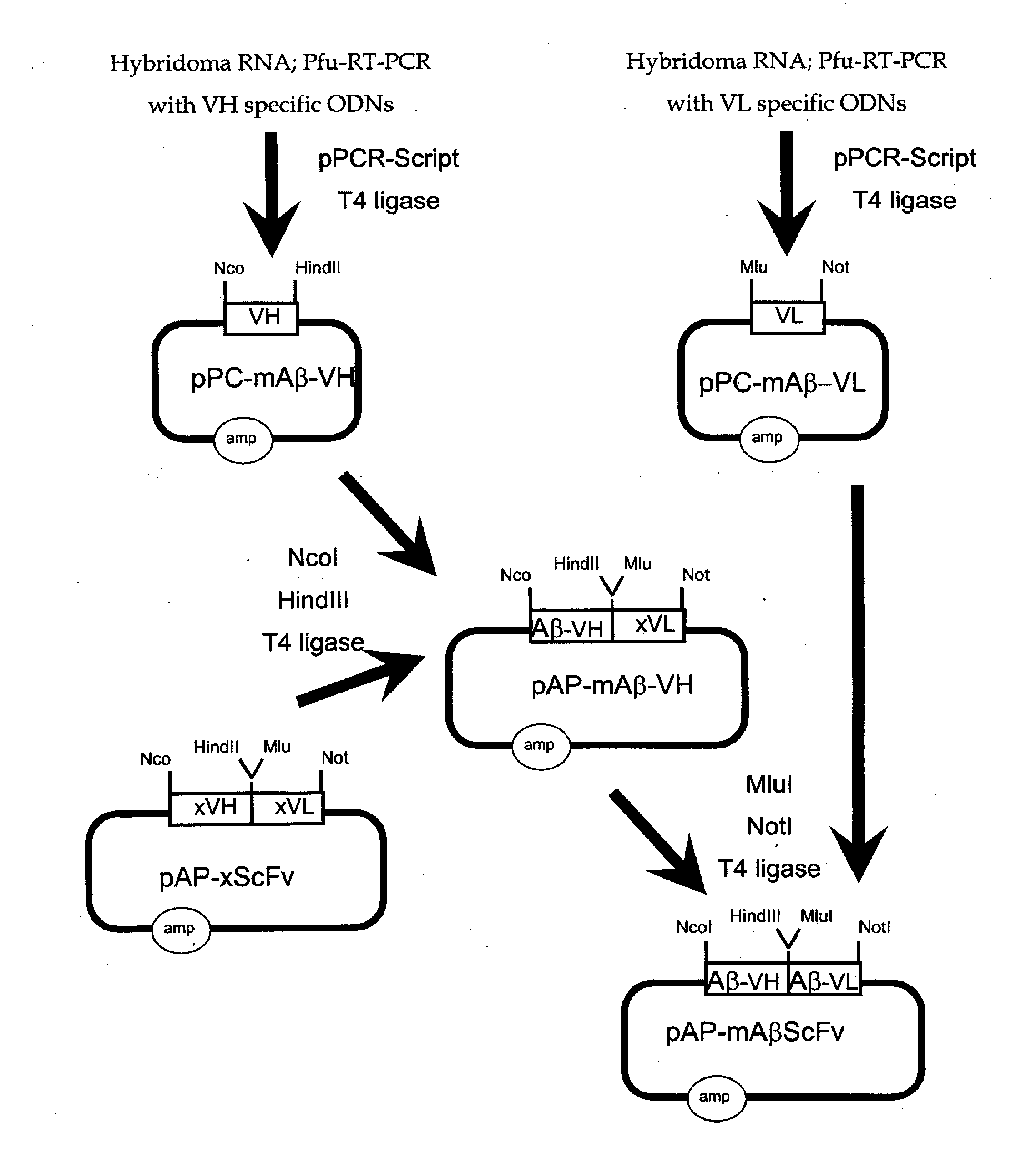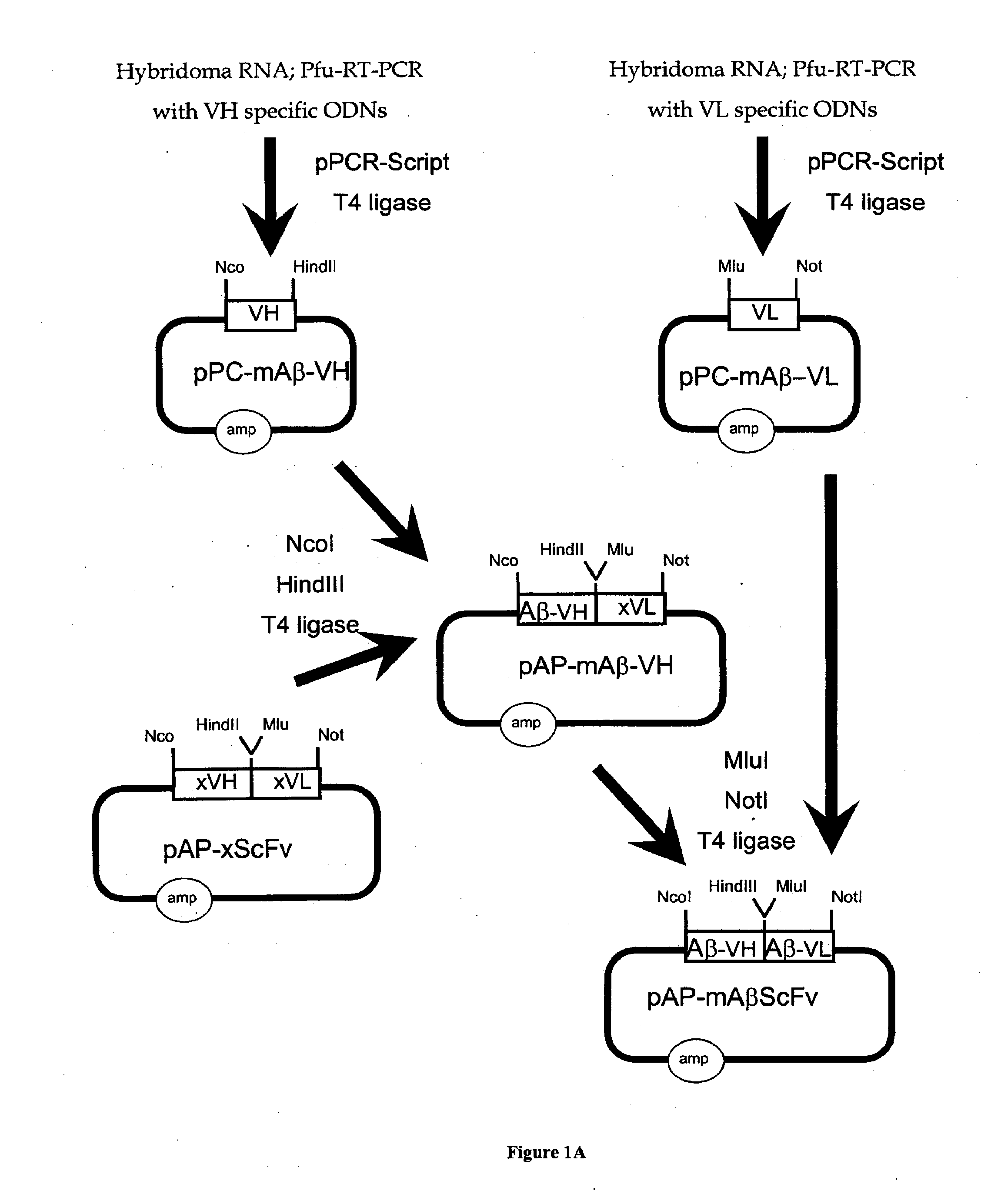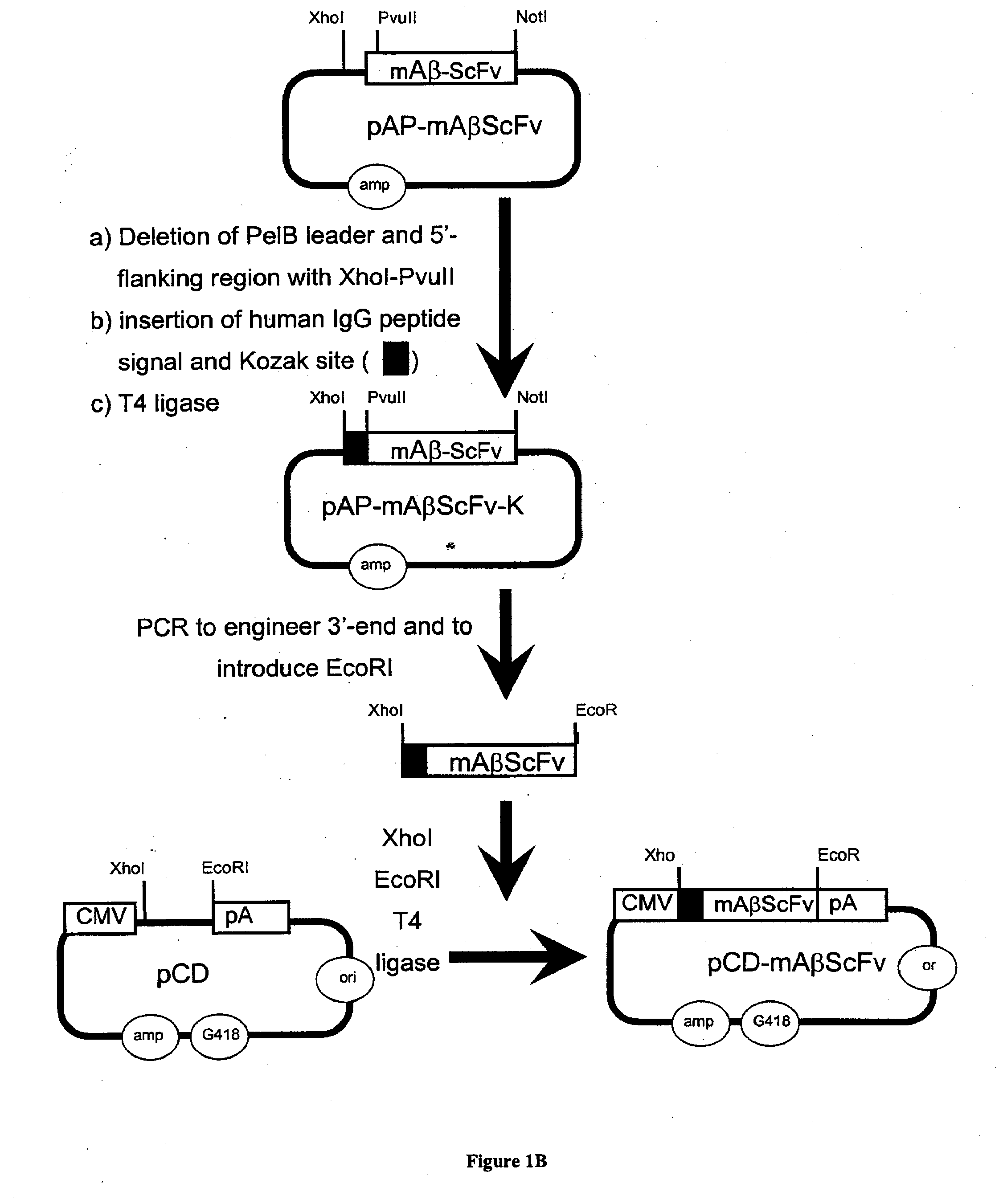Methods for Diagnosing and Treating CNS Disorders by Trans-Blood-Brain Barrier Delivery of Protein Compositions
a technology of protein composition and blood-brain barrier, which is applied in the direction of antibody medical ingredients, instruments, and metabolic disorders, can solve the problems of inability to gain access to the central nervous system by protein therapeutics, current diagnostic and treatment methods are limited in some aspects, and cns disorders are a major cause of mortality and disability worldwid
- Summary
- Abstract
- Description
- Claims
- Application Information
AI Technical Summary
Benefits of technology
Problems solved by technology
Method used
Image
Examples
example 1
Genetic Engineering of a Eukaryotic Expression Plasmid Encoding an Anti-Aβ ScFv.
[0319]The genetic engineering of a eukaryotic expression vector encoding a mouse single chain antibody to human Aβ peptide is outlined in FIG. 1. The final protein expression vector was designated pCD-mAβScFv (FIG. 1B). This vector was designed to produce a single chain Fv antibody (ScFv), comprised of both the variable region of the heavy chain (VH) and the variable region of the light chain (VL) of a mouse (m) monoclonal antibody to human Aβ peptide; this ScFv is designated mAβScFv. The VH and VL are fused by a 17 amino acid linker to form the ScFv. The pCD-mAβScFv plasmid encodes the mAβScFv with a human IgG signal peptide (FIG. 11; amino acid residues 1-19 of SEQ ID NO. 18), and its expression is driven by the CMV promoter. The pCD-mAβScFv expression vector also encompasses a full Kozak sequence domain (i.e. GCCGCCACCATGG; nucleotides 732-744 of SEQ ID NO. 27) prior to the ATG methionine initiation c...
example 2
Genetic Engineering of a Eukaryotic Expression Plasmid Encoding a Fusion Protein of the Anti-Aβ ScFv and the Chimeric HIRMAb Heavy Chain.
[0324]The genetic engineering of the eukaryotic expression vector encoding for the heavy chain of the fusion antibody was performed as summarized in FIG. 2. The fusion antibody heavy chain is comprised of the mAβScFv, which is fused at its amino terminus to the carboxyl terminus of the heavy chain (HC) of the chimeric HIRMAb; the HC of the chimeric HIRMAb is designated HC-1 in FIG. 2. The engineering of this gene encoding the HC of the fusion antibody was done in 2 steps: (a) PCR cloning of the mAβScFv and (b) insertion of this cDNA into the universal HIR heavy chain expression vector, designated pCD-UHC (FIG. 2), to form the pCD-HC-mAβScFv plasmid (FIG. 2). In the pCD-UHC expression vector, the chimeric HIRMAb heavy chain (HC) cDNA is preceded by the CMV promoter and is followed by the bovine growth hormone (BGH) polyadenylation sequence (pA). The...
example 3
I2V Site-Directed Mutagenesis of the FR1 of the VH of the Anti-Aβ ScFv.
[0325]Amino acid microsequencing analysis of the amino terminus of the light chain of the mAβ MAβ confirmed 11 residues, with the exception of the amino acid at position 2 of the light chain (FIG. 7). The PCR primers introduced a isoleucine (I or Ile) at position 2, whereas the hybridoma generated light chain contained a valine (V or Val) at position 2. The Ile residue was most likely introduced during the PCR cloning of the mAβ VL due to the use of degenerate primers used in the PCR amplification of this cDNA. It was necessary to perform site-directed mutagenesis (SDM) to change the I residue to a V residue at position 2, and this SDM is designated the I2V change. A new eukaryotic expression vector encoding for the heavy chain of the fusion antibody carrying the I2V VL mutant was constructed. The SDM was performed using the QuickChange II XL SDM kit (Stratagene) and standard protocol. SDM-ODNs were designed to i...
PUM
| Property | Measurement | Unit |
|---|---|---|
| molecular weight | aaaaa | aaaaa |
| molecular weight | aaaaa | aaaaa |
| molecular weight | aaaaa | aaaaa |
Abstract
Description
Claims
Application Information
 Login to View More
Login to View More - R&D
- Intellectual Property
- Life Sciences
- Materials
- Tech Scout
- Unparalleled Data Quality
- Higher Quality Content
- 60% Fewer Hallucinations
Browse by: Latest US Patents, China's latest patents, Technical Efficacy Thesaurus, Application Domain, Technology Topic, Popular Technical Reports.
© 2025 PatSnap. All rights reserved.Legal|Privacy policy|Modern Slavery Act Transparency Statement|Sitemap|About US| Contact US: help@patsnap.com



